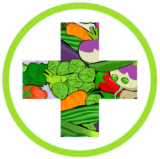Removing mold, fungus, and bacteria in the kitchen
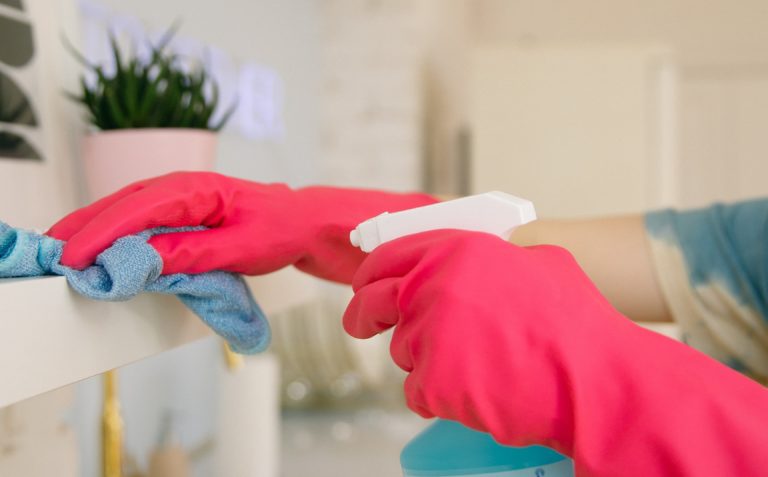
Removing toxic mold from your kitchen might be easier than you think. Set yourself up for success by using the best cleaners for mold, practicing effective cleaning methods, and by safely discarding contaminated materials. If you want to breathe easier in a clean, healthy, and mold free kitchen, this three part series from Mold Free Menu is for you!
In part one, we reviewed where to look and how to uncover hidden mold sources in your kitchen.
Now that you have discovered where mold lurks, it’s time to remove it. Mold spores that settle on hard surfaces in the kitchen can be quickly cleaned, and the good news is you will not need a professional mold remediation service to handle this part! If your investigation revealed a larger source of water damage or toxins, take comfort. Finding the source is the first and very helpful step toward healing. From here, hiring appropriate professionals is often the easiest and best choice to handle projects like water damaged walls or floors. If your Mold Inspection team did not offer a list of potential restoration professionals, begin by calling plumbers to repair leaks, appliance repair persons if kitchen appliances are in need of service, and building professionals to rebuild the surrounding area after leaks and repairs have been made. Please take note- it is extremely important to perform before/during/and after work testing to ensure the area has been completely cleared of both visible and invisible toxins. Omitting this crucial step might mean the remaining spores can grow and multiply even after the repair is complete. A new and effective method for testing is called Pathways Testing; visit their website to learn more and contact a technician in your area.
If your budget does not allow, and you choose to remove larger sources of mold in your kitchen yourself, consult the resources from Surviving Mold for guidance. If you are extremely handy, you can do this yourself but it is strongly recommended that you test the remediated area to make sure there aren’t any residual toxins left that can and will brew even in a new dry area. Pathways Testing and HERSMI testing are good options to implement jointly.
If you do not have the option of living in a mold free home until all of the remediation work has been completed, there are a few steps you can take right now to reduce the amount of toxins inhaled and ingested:
Regular cleaning specific to mold removal
Replacing smaller contaminated items
Air purification
Regular cleaning of places dust settles – in the kitchen or anywhere else in your home reduces the amount of mold you inhale, thus reducing health issues triggered by toxic mold. Every time someone walks by, a door is opened, or a fan is turned on, dust that has settled stirs up into the air and invisible particles are breathed in. Imagine a time when you saw dust floating in a bright stream of sunlight… yes, you and your loved ones are breathing that every day. Routine removal of mold dust in your kitchen is never a waste of time. Mold and toxins lurk in a variety of places both wet and dry, but toxin concentrations are found more often in or near places that ‘currently have’ or ‘have had’ a source of moisture.
Whether the source of mold in your kitchen is larger like water damage inside a wall, or a small contaminant like an over watered plant on your windowsill, be aware that toxic particles float into the air and resettle on surfaces.
To reduce the amounts of toxins inhaled, the procedure is simple: clean the surfaces regularly. To eliminate the toxins, removal of the source combined with regular HEPA vacuuming will clear the air. This post focuses on the tools, cleaners, and techniques to remove mold toxins in the kitchen. Part three of the series explains how to keep your kitchen mold free after the initial clean.
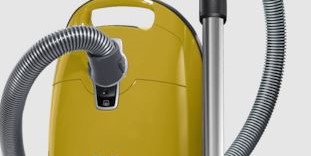
Now that we know how mold exposure happens in the kitchen, let’s get off to a strong start by disposing of anything that can’t be easily cleaned, using the most effective cleaners, and properly removing mold from kitchen surfaces & the air with the best techniques.
Some of the best tools to clean mold spores in your kitchen:
HEPA vacuum (models may vary but no substitutions on HEPA filtration. Miele is a good brand)
Swiffer (unscented, and not the reusable type this time)
Air purifiers (some help, but not all models)
Spoiler- most mops and buckets are specifically not on the list as using wet cleaning methods can make mold issues worse.
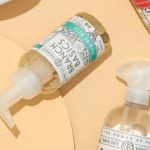
Best cleaners for mold in the kitchen:
For initial scrubs on hard surfaces like tile, an all purpose natural cleaner like this is extremely useful and affordable.
For small appliances like coffee makers & ice dispensers, food grade soap and water plus occasional natural disinfectants like these. For a coupon click here.
General surface cleaning is a two step process: first remove loose debris with a HEPA vacuum and second, wipe with surface to clear any spills or grease with an effective natural cleaner like this one. (coupon)
What’s not on this list for specific reasons: bleach, baking soda+vinegar combinations, most supermarket bottled products.
Important notes: No mixing and matching please! Some combinations of cleaners will make cleaning with them a waste of time and others could be extremely toxic! For example, the common blend of baking soda + vinegar is only useful the short while it is foaming. After the bubbles have dissipated, the mixture becomes ineffective as combining a base and an acid will neutralize each other. If you mix ammonia with bleach- the fumes can be fatal. Bleach and drain cleaners can cause significant damage to garbage disposal parts over time- and no one wants their garbage disposal to leak. Dripping garbage disposals breed mold under your sink!
For a detailed list of how to clean each item and surface in your kitchen, see our reference page.
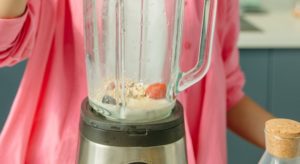
Reduce visible and invisible mold in your kitchen today with these methods:
daily surface cleaning of counters, tables, floors, and pet areas to remove debris & spills.
weekly (or daily if primary mold source has not yet been remediated) Swiffer of all hard surfaces
weekly or daily laundering of porous items like towels
weekly cleaning and maintenance of small and large appliances like the garbage disposal, floor mats, ice & water dispensers, vents & filters, dishwasher, microwave, blender, coffee maker, etc.
daily peek at your houseplants to ensure proper plant hygiene (dust, water, debris)
sponge and wash cloth replacement to avoid crossover contamination
avoid putting items away if not 100% dry (dishes, utensils, pantry items, etc.)
declutter – especially porous items like paper, dried flowers, herbs
Credible cleaning techniques are important. Removing mold is FAR more effective than ‘killing the mold’, as dry mold & fungus in the kitchen is just as harmful as ‘active’ wet mold. The old idea of “Spring Cleaning” has been replaced as studies reveal the benefits of regular cleaning and dust removal.
Whether you pull on a new pair of cleaning gloves and tackle the initial cleaning round in one afternoon, or make arrangements with a house cleaner to follow the steps for you, your kitchen can become a mold free zone. If you are feeling a little overwhelmed about the cleaning task right now- here’s a brighter thought: you and your loved ones will probably notice improved health in as little as two weeks after a thorough cleaning and maintenance cleanings. Your kitchen will not stink like bleach, and the cost of cleaning supplies will most likely be less than you spend right now if you follow the suggestions in the post. Good health is worth the investment of time, and many of the tips & products listed are very low in cost.
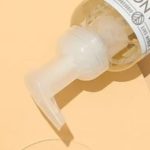
As a CIRS survivor, I’ve been down many paths of cleaning… fogging, air purifiers, bleach, peroxide, baking soda, vinegar, essential oils, and more in an effort to ‘clean the mold’ even if there wasn’t much to be seen. Though some of the techniques can be helpful, I’ve discovered easier and more effective methods with the guidance of Indoor Air Quality experts that specialize in biotoxin removal.
One of the most effective ways to keep your home free of mold and other toxins (after eliminating the growth source of course ☺) is cleaning effectively and often, and only using products and methods that work. The solution is a combination of proper vacuuming, surface wiping with nontoxic products, and elimination of even the smallest of mold sources in the kitchen and the home in general. This process WILL MAKE A MEASURABLE and positive DIFFERENCE.
For a detailed list of how to clean each item and surface in your kitchen, see our reference page.
Worthy of note!
…even though it may not be directly related to clearing mold from your kitchen, this little plant based gem is a personal favorite and makes hand washing in the kitchen faster & gentle. I switched my kitchen hand soap (and everywhere else in the house!) immediately after trying out a bottle. (coupon! 🙂 And there’s no better time than now to tossthetoxins. Here you will also information on responsible discarding other cleaners.
If you are immunocompromised or suffer from asthma or CIRS, carefully handle dusty places to keep dust stirring to a minimum. Wear a N95/K95 mask while cleaning to significantly reduce mold spore & dust inhaled. If you discover visible mold like ‘black mold’ in a water damaged area, do not attempt to clean it with household cleaners as it will not be effective. Consult a remediation service from our resource list for safe removal of the moldy building materials, as well as a professional tradesperson to repair the source of the water. (call a plumber if pipe related, contact an architect or contractor for home structure issues, or reach out to a landlord if you do not own the home)
If you missed part one and two of this three part series- click or tap below to dive in and reclaim your health!
Part one: Understanding sources of mold in your kitchen
Part two: Removing mold, fungus, and bacteria in the kitchen
Part three: Keeping your kitchen clean and mold free
Congratulations! You’ve reached the end of this post- why not reward yourself with a few squares of mold free chocolate or treat your house cleaning team to a few bars?
